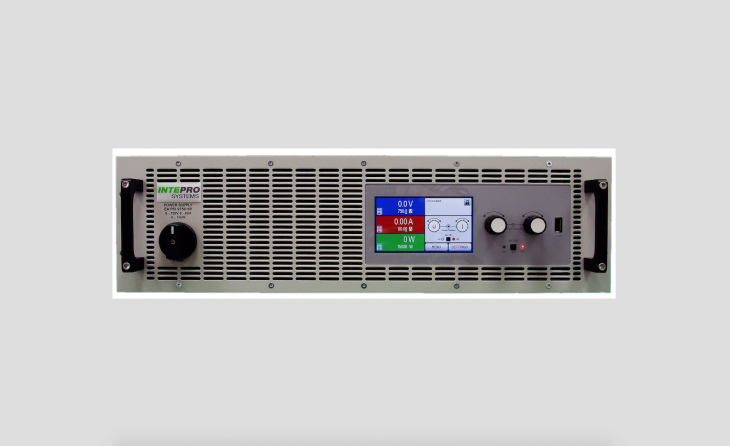Press Releases
Intepro Systems News
PSE Series Programmable DC Source voltage slew rate considerations

In many instances, the proper testing requires submitting the device-under-test (DUT) to a wide range of operating conditions. In some cases, subjecting the DUT to voltage turn ON and OFF conditions is an important factor during design verification or final test. The slew rate of switch mode programmable power source (SMPS) could directly influence DUT test results. SMPS design uses parallel capacitors (C) to on the output to filter out EMI noise generated by the power switching devices. The amount of output capacitance influences RMS and P-P noise on the RL (load) side of the amplifier stage. As a result of the filtering stage voltage slew rate during fall conditions is highly dependent on the amount of load. The lighter the load, the slower the slew rate. Inversely, the higher the load the higher the slew rate. Intepro’s PSI Series is industry leading tuned to provide both low EMI noise and high speed slew rates. The following examples were taken using Intepro’s Auto-Ranging PSI 9750-60 3U programmable DC power source which is capable of 750Vdc and up to 60A of current.
Figure 2 illustrates a pulsed waveform using the PSI’s internal function generator is programmed to a 200Vdc rectangular pulsed cycle for 30msec on and 30msec off. The PSI was in a no load condition.
The output capacitors charge quickly resulting in a voltage rise time of approximately 2msec. Once charged the stored energy is slowly dissipated during voltage fall and resulted in around 12.5msec.
Figure 3 illustrates a similar pulsed waveform at 50A load which is around 83% of the sources current capabilities. The DUT’s load current quickly dissipates output capacitance that results a voltage fall time from 28V (typical avionics) to 0V in 431µsec.
The ELR 9000 Series offers four common regulation modes: constant voltage, constant current, constant resistance and constant power. The FPGA-based operational controls include a function generator and a table-based regulation circuit for the simulation of non-linear internal resistances. Intepro’s PowerStar 6 software package enables the creation of test routines using a drag-and drop menu where coding can be performed without programming.
“Our new ELR 9000 Series of electronic DC load offers all the necessary features of today’s electronic loads — plus the added benefit of energy recovery to mains,” said Gerard Sheehan, Intepro’s Chief Technical Officer. “Recovering the load energy reduces energy costs. It also offers a cost-effective alternative to the expensive cooling systems used by conventional air- and watercooled loads to dissipate energy as heat.”
Intepro Systems offers the DC electronic load as stand-alone units or as complete test systems. Maintenance contracts and onsite calibrations are also available for its test systems. For more information about this product, please download the ELR 9000 Series data sheet.
More information

In summary voltage slew rate of programming DC sources is largely dependent on load conditions. Selecting the correct DC source for DUT requirements requires careful considerations to ensure test requirements are met. If you have questions about our products please contact Intepro Systems at
Read the full article here.
Products
Support
Company

